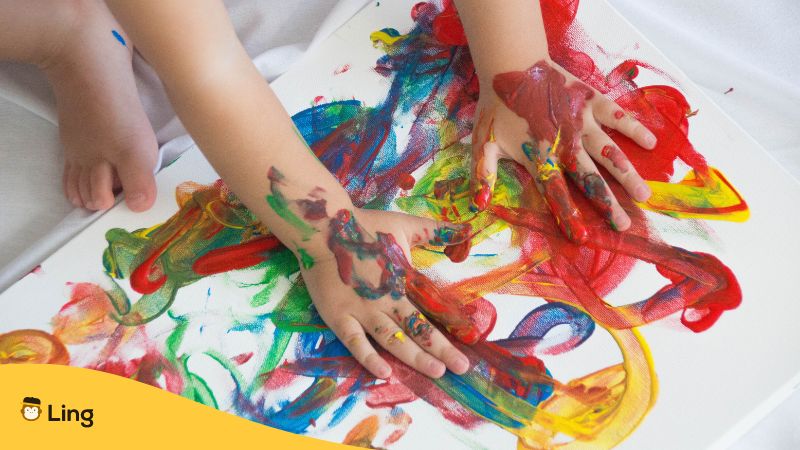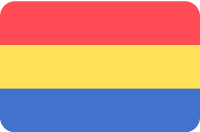When teaching your children their first words in Tagalog, choosing which ones to teach can be daunting, especially for kids! With so many words to choose from, it can be a bit harrowing for parents to know how to help their kids learn this epic Asian language best. In this post, we’ll go over the easy Tagalog words for toddlers to learn.
Raising a Filipino kid? Teaching the Tagalog language to toddlers is essential because it helps them develop a strong foundation in their native language and also helps them connect with their cultural heritage. Furthermore, it can also give them a head start in learning other dialects in the Philippines. Let’s get to know more about it in the sections below.
Table Of Contents
What Are The Best Tagalog Words For Toddlers
As a parent, you should know what Tagalog words you should teach your kids first. It’s important to go with the essentials initially, then slowly introduce them to the intermediate Tagalog words.
Essential Words And Phrases
When you want to teach your toddler Tagalog, starting with a few basic Tagalog words and phrases sets the stage for better learning. This guide on Tagalog introduces preschool children to basic terms and phrases that are easy to say and remember. So start your children small, and watch as they keep learning more and more words as we go along!
Hello – Kumusta Ka?
Pronunciation: kuh-moos-tuh kah?
This is the basic greeting used by Filipinos – a very casual yet polite way to say hello and ask how someone is. Variants include kumusta or kumusta na? Either way, they all mean the same thing!
Goodbye – Paalam
Pronunciation: pah-ah-lam
Paalam is one way to say goodbye in Tagalog. It is the most formal way to say it, as colloquially, Filipinos would use the English bye instead. Still, if we’re developing language skills, we must be as immersed as possible!

The Honorifics Po And Opo
In Filipino culture, one of the first things that kids learn is po and opo – honorific words that are added to the end of each Tagalog sentence when speaking to someone older. However, rather than just a word, it is more of a grammar rule that respects seniority in Filipino.
To teach these honorifics to your kids, let them know that they have to use po when speaking to someone older than them. Their Pinoy grandparents will be thrilled when they use po and opo when talking with your bilingual children!
Body Parts
Let’s get into some of the body parts in Tagalog your toddler would want to learn! Teaching them these crucial words helps them learn Tagalog faster and will also help them communicate their physical needs in the Philippine national language.
These are the essential body parts in Filipino, and they are great for teaching toddlers! These words also lead very nicely into teaching them their first Filipino nursery rhyme: Paa, Tuhod, Balikat, Ulo!
Pro Tip: Using visual aids when teaching Tagalog words makes learning fun! And you know what? You can do that with the Ling app! It’s a fun and easy way to learn Tagalog and 60+ other languages. The Ling app is complete with audio, visual aids like flashcards, an AI chatbot, and more! You can get this language app on Google Play and the App Store and use it for free!

Colors
What would children be without their crayons, pastels, and colorful toys? Teaching your toddler the Filipino words for primary colors in Tagalog is crucial for giving them a positive experience when speaking! Here are some words for primary colors:
| English | Tagalog | Pronunciation | Sound |
|---|---|---|---|
| Red | pula | poo-lah | |
| Blue | asul | ah-sool | |
| Green | berde | behr-deh | |
| Yellow | dilaw | dee-low | |
| Orange | kahel | kah-hel | |
| White | puti | poo-tee | |
| Black | itim | ee-tim |
The language-savvy among you may have spotted a few words that sounded very similar to Spanish, and you’re right! Here’s a fun fact: many words, including asul and berde, are holdovers from the Spanish era of the Philippines. After 333 years of Spanish rule, the Filipino culture has adapted some words into its national language.
Numbers
Who doesn’t love numbers when learning a new language? Kids will have a lot of fun learning how to count numbers in Tagalog, especially toddlers! Here are the numbers one to ten that you can use to teach your children how to count in Tagalog.
| English | Tagalog | Pronunciation | Sound |
|---|---|---|---|
| One | isa | ee-sah | |
| Two | dalawa | dah-lah-wah | |
| Three | tatlo | tat-loh | |
| Four | apat | ah-pot | |
| Five | lima | lee-mah | |
| Six | anim | ah-nim | |
| Seven | pito | pee-toh | |
| Eight | walo | wah-loh | |
| Nine | siyam | see-yam | |
| Ten | sampu | sam-pooh |
Those are the numbers one to ten in Tagalog! But, of course, once you get past ten, it’s a whole different system that we won’t get into right now! If you want to learn how to count in Tagalog, download the Ling app and learn Tagalog words both you and your toddler can enjoy.
Another fun fact: Native Filipino speakers use two number systems when counting. They use Spanish words for numbers, another holdout from the Spanish era. So when you come to the Philippines, don’t be surprised if people start counting en Español!

Essential Action Words In Tagalog
Now we’re getting into some more complicated stuff—verbs! Known as pandiwa in Filipino, these verbs will be necessary for your kids to learn so they can clearly express what they are doing or currently doing in this language. Let’s see what we’ve got…
Common Activities
Let’s start with the most common activities your child needs to learn first. Since they are toddlers, you can easily teach them these words because these actions are what they like to do!
| English | Tagalog | Pronunciation | Sound |
|---|---|---|---|
| Run | takbo | tack-bo | |
| Jump | talon | tah-lohn | |
| Dance | sayaw | sah-yow | |
| Sing | kanta | khan-tah | |
| Play | laro | lah-roh |
Daily Activities
For something more usable in your day-to-day life, let’s now go to some terms used for daily activities: eating, drinking, sleeping, and brushing your teeth. It’s one way to keep your children learning by incorporating Filipino into their daily activities. In addition, this method makes learning more intuitive.
| English | Tagalog | Pronunciation | Sound |
|---|---|---|---|
| Eat | kain | kah-een | |
| Drink | inom | ee-nohm | |
| Sleep | tulog | too-lohg | |
| Brush teeth | sipilyo | see-peel-yoh |
These basic verbs in Tagalog, or pandiwa, are some of the most common terms your children will use when describing their day. Of course, there are still tenses to consider when using these verbs, but we won’t get into that just yet. But if you want a head start, download the Ling app now or check out our guide about Tagalog verb tenses.

Animals And Nature In Tagalog
If you want your kids to master Tagalog truly, you’ll have to give them the words they need to describe the world around them. That’s why teaching them the Tagalog equivalent of familiar animals and words related to nature is essential in helping them understand both the world around them and the terms used to describe it—all in Tagalog, of course!
Common Animals
These common animal words below will pique their interest in learning a new language. Let’s have some examples:
| English | Tagalog | Pronunciation | Sound |
|---|---|---|---|
| Dog | aso | ah-soh | |
| Cat | pusa | poo-sah | |
| Bird | ibon | ee-bohn | |
| Fish | isda | ees-dah | |
| Mouse | daga | dah-gah | |
| Monkey | unggoy | oong-goy | |
| Eagle | agila | ah-gee-luh |
Pro Tip: If you want to show this to them, make sure to add some visual learning materials as well—create a little slideshow in Google Slides for flashcards, and watch your kids’ eyes brighten as they learn new words they can use!
Bonus Tip: During a long car ride, ask your child to say the Filipino equivalent of the animals they see along the road. You’ll be surprised at how much they retain if they practice enough!
Nature Words
Thinking of going on a camping trip with the kids? Please take this opportunity to teach them something new! Here are some nature-related words that you can use to continue your child’s language education, even during camping trips.
These are just some of the most common nature words in Tagalog that you can use to enhance your toddler’s vocabulary in a way that makes it feel more fun than just reading off a book!
Fun fact: Did you know that the English word boondock, which means “a rural area settled by a few people,” has its roots in Tagalog? Yes! This is a loan word from when the US occupied the country shortly after the Second World War.

Emotions And Feelings In Tagalog
We want our kids to grow up knowing how to express themselves clearly. So, if you want them to know how to express their emotions and feelings in Tagalog, we’ve got you! We’ll detail a few common feelings and their translations in this language so you can show your child how to express themselves when needed adequately.
Emotions In Tagalog
Here are some common words (not phrases!) used to express emotions in Filipino. If you want to use this in a simple sentence, remember to use the possessive ako (me) at the end of each word to denote that the speaker is feeling this emotion.
| English | Tagalog | Pronunciation | Sound |
|---|---|---|---|
| Happy | masaya | mah-sah-yah | |
| Sad | malungkot | mah-loong-cot | |
| Angry | galit | gah-leet | |
| Excited | sabik | sah-beek |
Those are the most common emotions used in Filipino! Some words, such as sabik, have been replaced by English loan words like “excited” recently, but you can still teach your kids the correct way of saying it in Filipino!
Feelings In Tagalog
Now, some feelings toddlers may commonly feel are told in the Filipino language! These words are super easy and add more value to your kids’ language education. Make sure to teach them how to express themselves this way since kids who know how to tell people how they’re feeling will develop excellent social skills in the future!
| English | Tagalog | Pronunciation | Sound |
|---|---|---|---|
| Hot | mainit | mah-ee-net | |
| Cold | malamig | mah-lah-meeg | |
| Tired | pagod | pah-gohd | |
| Hungry | gutom | goo-tohm | |
| Sleepy | inaantok | i-nah-ahn-tohk |
These are some of the most likely feel your child will have daily. Once they get these words down pat, you’ll be able to tell (in Tagalog, of course!) how your kids are feeling now!
Time To Get Your Kids Talking Tagalog!
Learning Tagalog is a fantastic way for kids to connect with their Filipino heritage! Plus, if they speak the language, they can talk with all their amazing relatives in the Philippines.
What’s more, learning a new language at a young age helps kids’ brains work in super cool ways. It makes them better at learning and a whole lot smarter!
Whether your family is from the Philippines or just loves to discover new cultures, teaching your child Tagalog is a great decision. The Tagalog words for toddlers they learn now will only grow with them, opening up so many exciting possibilities as they get older!
Updated By: Jefbeck



































































